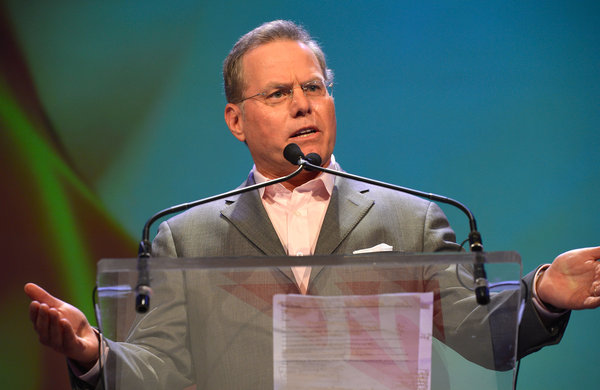David Zaslav Defends Upfront Strategy as Ad Revenue Drops
Warner Bros. Discovery CEO says push for price increases will continue

In last year’s upfront, a newly formed Warner Bros. Discovery held out for bigger price increases while other programmers concluded their negotiations and closed the book on deals.
Warner Bros. Discovery didn’t close its upfront negotiations till August. At that point, CEO David Zaslav crowed about securing price increases in the low-to-mid-teen range.
“We see ourselves as essentially the fifth broadcast network … and our low to mid-teen CPM increases and our nearly $6 billion in commitments clearly demonstrates that advertisers now see us exactly that way,” Zaslav said at the time.
But there was a downside to Warner Bros. Discovery’s upfront gambit: It sold less of its advertising inventory in the upfront, leaving more to be sold in the scatter market. And with the ad market weak in the fourth quarter, ad revenues at the company’s TV networks fell 14% to $2.2 billion.
Zaslav, who has frequently complained about the price disparity between broadcast networks and cable networks, defended the strategy during the company’s earnings call on Thursday evening.
“We made a decision in the upfront to drive price rather than extra volume,“ Zaslav said. “And I believe in that, having been in this business for 30 years, I think in order to really drive asset value, you need to drive price. And we were able in the upfront to drive price significantly more than all of our peers.
“But in order to do that, we took less volume than we could have,“ he continued. “And now you see a very soft scatter market. So that is having some impact on us versus others that were — that took a much bigger position in the upfront. Having said that, as we face this next upfront, which is coming up in two months, I think the breadth of our content together with where we go in on price, positions us very well. And so we'll keep in mind this balance of volume versus price.
The smarter way to stay on top of broadcasting and cable industry. Sign up below
“But I always would err toward price, because I think that's where you really build asset value,” Zaslav said.
Advertising revenue rose 75% to $123 million at WBD’s direct-to-consumer business.
Zaslav noted that HBO Max has begun selling advertising on HBO originals. The company began offering pre-roll spots — commercials that run before the start of a show like The Last of Us without creating commercial breaks that interrupt the program.
Overall advertising remains an X factor for media companies.
“The biggest unknown continues to be in the ad sales environment,” WBD chief financial officer Gunnar Wiedenfels said.
“We do see the weekly bookings right now ticking up slightly if you compare January and February with maybe the November, December timeframe, looking a little better; retail, fast food, entertainment, a little better; telecom, small, but coming back; but then you've got other areas like technology, [which] is still completely depressed,” Wiedenfels said.
Zaslav told analysts he is “hyper-focused” on ad revenue, meeting weekly with the ad sales team.
“The market is — the macro environment is very challenging,“ Zaslav said ”It’s significantly better outside the U.S. right now, which is a surprise.
“The sentiment is not terrific. The scatter market overall is very slow, I would say, steady to maybe a little bit better than it was in the fourth quarter. But the digital inventory, which really held up in the fourth quarter has also softened,” he said.
Despite that, “we are assuming that things will get better in the second half,” Zaslav said.
“I have no doubt that when the market turns, we're going to be in a very, very good position to capture that upswing as well, especially, as David mentioned, with more inventory on the digital side becoming available,” Wiedenfels added. ■
Jon has been business editor of Broadcasting+Cable since 2010. He focuses on revenue-generating activities, including advertising and distribution, as well as executive intrigue and merger and acquisition activity. Just about any story is fair game, if a dollar sign can make its way into the article. Before B+C, Jon covered the industry for TVWeek, Cable World, Electronic Media, Advertising Age and The New York Post. A native New Yorker, Jon is hiding in plain sight in the suburbs of Chicago.

